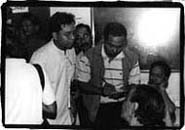History
of Journalism in the Philippines![]()
 |
|
Martial Law After more than three decades of free press, on September 21, 1972 upon the declaration of Martial Law, publications were once again halted from their liberal operations. Then Pres. Ferdinand Marcos issued Letter of Instruction (LOI) No. I which contained the ordinance, "to take over and control or cause the taking over and control of the mass media for the duration of the national emergency, or until otherwise ordered by the President or by his duly designated representative." Almost similar to the press' situation during the Japanese Occupation, publications were put under government supervision. Media entities were sequestered or closed down restraining their operation unless approved by the MMC / MAC agency, which was tasked to regulate them. Editors, publishers and activist-journalists were put into jail considering them as threat to the administration. It was in this period when the likes Geny Lopez, Jr., Chino Roces, Max V. Soliven, Luis Beltran, Teodoro Locsin, Jose Diokno, Benigno Aquino, Jr. and others were detained at Camp Crame. The only periodicals that continuously existed were those owned by Marcos' cronies and relatives. These included Manila Daily Bulletin, then owned by the late Gen. Hans Menzi who was presidential aide-de-camp, The Times Journal by Benjamin "Kokoy" Romualdez, brother of then First Lady, Imelda Marcos, and The Daily Express by Roberto S. Benedicto, who was a family friend. |
 |
Home |
Who
are the Roces? | History
of Journalism in the Philippines | Copyright©
2002 by Sassy Mae C.
Sumulong |